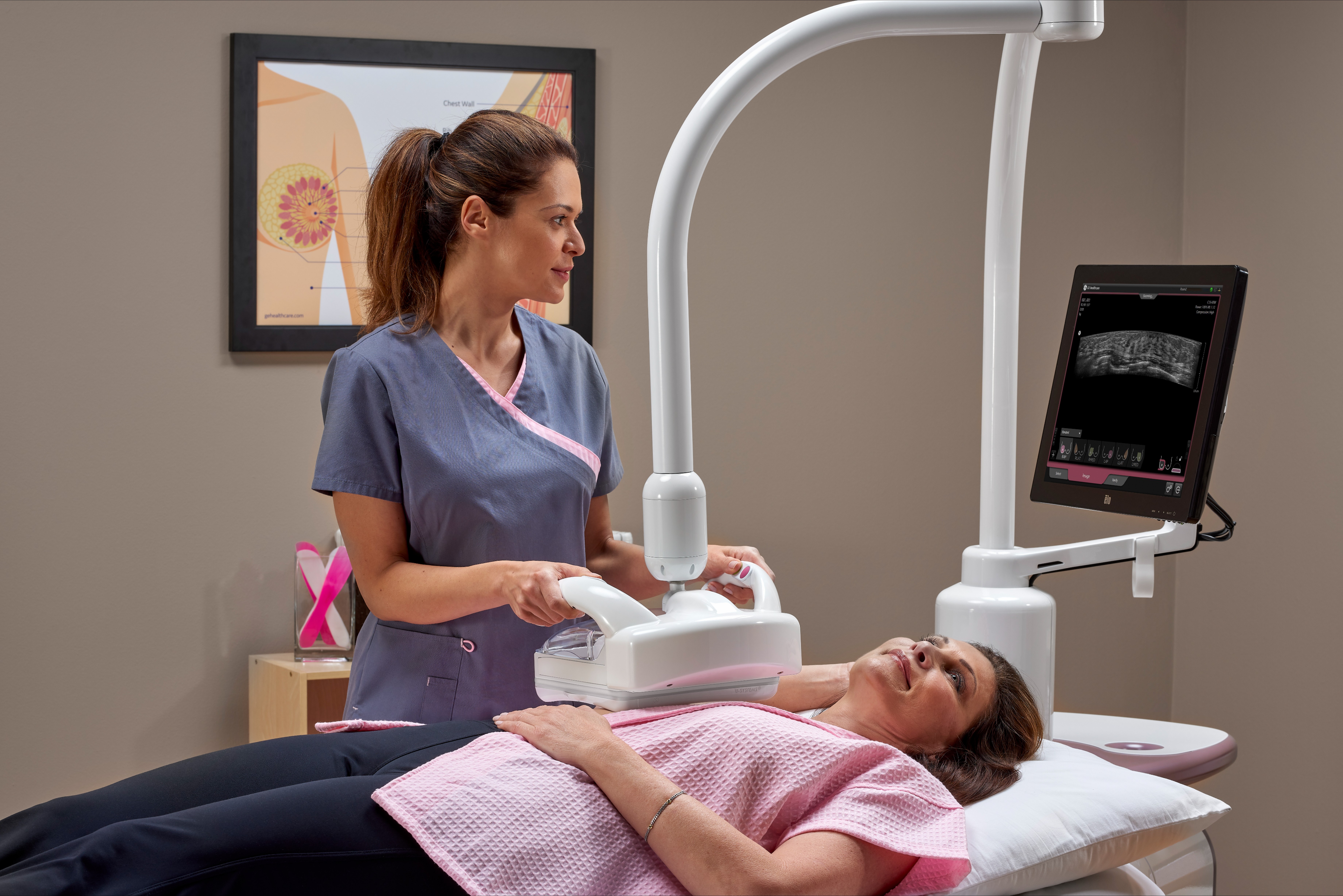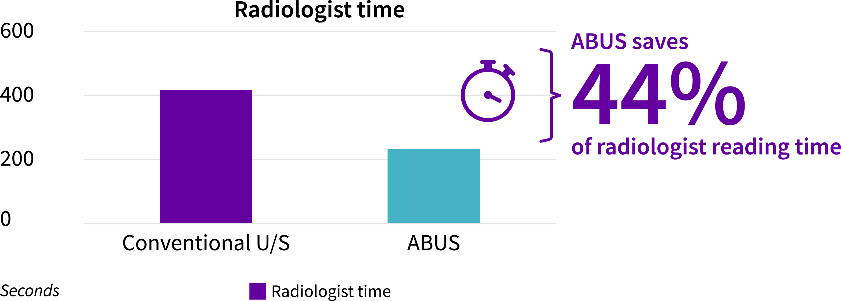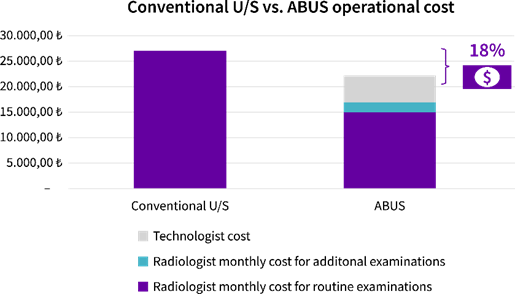The healthcare industry is experiencing an increasing global shortage of radiologists 1, and an uptick in overall demand is adding pressure on current healthcare providers, leading to clinical burnout. In the coming years, it is anticipated that the demand for healthcare will continue to outpace the supply of healthcare professionals.2 In breast care, this is no exception.
In September 2024, a U.S. Food and Drug Administration (FDA) mandate under the Mammography Quality Standards Act (MQSA) of 1992 will go into effect requiring mammography facilities to provide information to patients regarding their breast density and recommend options for additional imaging tests for those with dense breasts – a major win in the breast care fight.3
These new U.S. FDA guidelines, and similar guidance from the European Society of Breast Imaging (EUSOBI), emphasize the importance of supplemental image screening with ultrasound in women with dense breasts. With this guidance, patients will be equipped with the details they need to make informed decisions with their provider about their breast health. Consequently, these new guidelines, coupled with an overall increase in imaging needs due to aging populations, will continue to greatly boost the need for more breast exams.
The power of automated breast ultrasound to address clinical challenges
The emergence of patient-friendly, easily-accessible ultrasound technology like automated breast ultrasound (ABUS) including GE HealthCare’s Invenia™ ABUS can help bridge the gap between the increased demand for comprehensive breast care and provide clinicians with much needed support.
ABUS, a standardized, supplemental examination, increases the detection rate of breast cancer specifically in dense breasts and yields reproducible results. Dense breast tissue can overlap and mask small lesions, which can go undetected in a mammogram. In some cases, the tissue and cancer can show up as white on a mammogram making diagnosis more difficult. However, ABUS has been shown to improve breast cancer detection over mammography alone for women with dense breasts and help women avoid unnecessary biopsies.4-6
Read one woman’s wise words on the importance of an ABUS exam.
The power of automated breast ultrasound to address operational challenges
In addition to the many clinical benefits it offers, ABUS is designed to address operational challenges not being served by other modalities, including providing a standardized acquisition protocol. The separation between image acquisition and interpretation, improves reproducibility and reduces operator dependency and radiologist workload, increasing patient throughput.
For instance, the Acıbadem Altunizade Hospital Radiology Clinic in Istanbul saw significant improvement in both operational and economic benefits when implementing this technology in their clinic.
In 2017, the Acıbadem Altunizade Hospital Radiology Clinic introduced the Invenia ABUS to their clinic under the leadership of experienced breast radiologist Professor M. Erkin Aribal. Two years later, the clinic added a second ABUS system to support their staff, which consisted of four, part-time physicians seeing a patient load of more than 6,000 patients per year. Since switching from conventional ultrasound to ABUS, Professor Aribal said “the clinic has demonstrated a significant improvement in workflow and efficiency, with unexpected benefits in diagnostic scans and even biopsies. It has also realized a significant savings in radiologist's time.”
The following are findings from a case study demonstrating the economic and operational implications of the implementation of ABUS.7
Enhanced productivity
In 2021, the clinic conducted a workflow study that showed ABUS (versus traditional ultrasound) reduced the overall amount of time required by radiologists since technologists were now able to perform the scans themselves. ABUS aided in time savings by enabling a targeted approach instead of the full evaluation of both breasts as required with conventional ultrasound. However, for Dr. Aribal and his colleagues this was not the only benefit; ABUS also freed up physicians’ time for more complex examinations and interpretations, while providing standardized images that can be evaluated once the patient leaves and during less busy times at the clinic.
Overall, the clinic saw meaningful results with the addition of ABUS in the examination workflow, allowing physicians to spend more time providing personalized care and quality time to patients.
In the United States, a sonographer performs traditional breast ultrasound scanning but in Turkey and many other countries across the globe, the physician performs the ultrasound exam. In comparison, ABUS scanning can be done by technologists, but ABUS reading is done by a physician on duty. For the Acıbadem Altunizade Hospital Radiology Clinic, technologists were trained and empowered to perform the ABUS scanning, freeing up physicians for more complex scanning and readings, and allowing more time with the patient.
Economic efficiencies
Additionally, with the ability to evaluate the exams after the patient leaves and a noted reduction in radiologist and technologist time, the implementation of ABUS ultimately yielded cost savings. In the same workflow study, the Acıbadem Altunizade Hospital Radiology Clinic realized a 18% savings in operational costs (about $300 USD based on 665 patients per month).
These savings can also translate into cut costs for overburdened healthcare systems. Government health regulations, such as those from the FDA and EUSOBI, may encourage further implementation of ABUS, resulting in earlier screening and diagnoses, which could translate into future savings.
Overall, the Acıbadem Altunizade Hospital Radiology Clinic found that adding ABUS greatly enhanced the clinic’s workflow, saving time and operational costs, and allowed the time savings to benefit patients who need focused care the most.
Imaging technology should offer solutions that support the increasing demand for breast imaging. See how GE HealthCare’s Invenia 2.0 ABUS, the first FDA-approved ultrasound supplemental screening tool specifically designed for detecting cancer in dense breasts, is leading the way and transforming breast cancer care, both clinically and operationally: https://www.gehealthcare.com/campaigns/automated-breast-ultrasound.
Disclaimer: Not all products or features are available in all geographies. Check with your local GE HealthCare representative for availability in your country.
References
1. Radiology Facing a Global Shortage. RSNA News. 10 May 2022. https://www.rsna.org/news/2022/may/global-radiologist-shortage.
2. Health Workforce Reform, Stat: Demand for Care Outpacing Supply of Workers. National Conference of State Legislatures. 28 November 2023. https://www.ncsl.org/state-legislatures-news/details/health-workforce-reform-stat-demand-for-care-outpacing-supply-of-workers.
3. https://public-inspection.federalregister.gov/2023-04550.pdf. Effective September 10, 2024.
4. Brem RF, Tabár L, et.al. Radiology. 2015 Mar; 274(3): 663-73;
5. FDA PMA P110006 summary of safety and effectiveness.
6. Wenhui Ren, MPH, & Youlin Qiao, MD, PhD, Fanghui Zhao, MD, PhD et al. 2023 The Association of University Radiologists. Elsevier Inc https://doi.org/10.1016/j. acra.2023.02.026.
7. GE Case Study: Implementation of Invenia ABUS improves operational and economic benefits. Prof. Aribal, Acibadem Hospital. jb21392xx.



